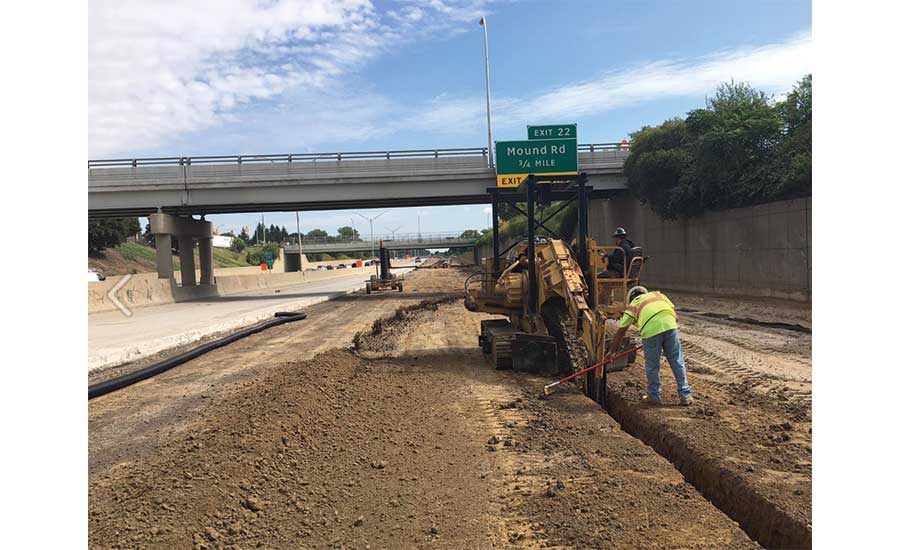Despite continued claims of labor shortages around the U.S., average wage and fringe rates remain on a relatively steady path. While craftworkers overall are not seeing big jumps in hourly wages and benefits, specific high-demand trades are gaining significant increases, particularly in hot metro markets.
An August survey of 2,500 construction firms by Autodesk and Associated General Contractors found 80% of respondents reporting difficulty filling hourly craft positions, with 62% noting higher base-pay rates.
Firms say the five toughest craft jobs to fill are pipelayers, sheet-metal workers, carpenters, concrete workers and pipefitter-welders.
Union labor continues to see modest gains, but rates remain well short of annual wage and benefit hikes seen before the 2008 recession. First-year new settlements climbed steadily to 3% in the second quarter of 2018, from 1.7% in 2011, says the Construction Labor Research Council.
Carey Peters, executive director, says agreements rose by about 0.1% to 0.2% annually during that time. Even so, current first-year increases are well below pre-recession levels that exceeded 4%, he says. “We’re not seeing upward pressure on wages resulting from a shortage of workers.”
Specific trades have seen bigger bumps. Peters says recent first-year settlements for carpenters, insulators and sheet metal workers have been in the 3.5% to 4% range. By comparison, Teamsters and boilermakers have seen increases of around 2%, he says.
|
Related Link |
Nonunion craftworkers are seeing similar trends in annual wage hikes.
In 2017, they averaged 3.4%, up from 3.3% in 2016, says the 2018 Merit Shop Wage and Benefit Survey conducted by Personnel Administrative Services.
Jeff Robinson, president, says he expects 2018 could follow a similar path, but market indicators suggest bigger increases on the horizon. “The employment cost index has been sliding up over 3% this year,” he says. “Historically, pay increases trend about a percentage point above that. If that [3%] holds for another couple of quarters, I’d expect to start seeing increases of around 4%.”
As with union labor, some crafts have fared better than others. Last year, finishers, operating engineers and laborers saw 5%, 3.9% and 3.6% increases, respectively. Welders’ wages rose 8%, but rate gains for electricians, structural iron workers and pipefitters were below 3%.
Some metro markets have seen pressure on wages push rates well above national averages.
Mark Breslin, CEO of United Contractors in California, says labor demand in the San Francisco Bay area is at critical levels. “We are at both peak capacity and peak demand,” he says. “It’s a delta that seems almost insurmountable.”
But Breslin says union contractors fear a looming market downturn. “We haven’t seen a downturn in eight years and, historically, you’d expect another one is coming,” he says. “A lot of employers remember the last recession and are being careful, but [for] people who joined crafts in the last eight years, all they’ve known are years of increases.”
This summer, glazers in Northern California, represented by painters’ union District 16, went on strike for both higher wages and longer settlement terms. Jeannie Simpelo, CEO of union employer group Northern California Allied Trades, says union leaders pushed for a pact of three-to-five years.
Bay Area contractors have been doing well, she says, but they are less confident about the economy and the market beyond 2020.
In September, both sides agreed on a three-year pact with a combined 22% hike that Simpelo expects to go almost entirely into wages. “Our contractors agreed we can afford it right now,” she says. “But three years from now, will the jobs still be available if we’re at this price and everyone else is $5-per-hour cheaper? We don’t know.”
In the Seattle area, Operating Engineers Local 302 ratified new settlements last month after a summer of strikes and slowdowns. The union rejected a tentative agreement that included a 15.9% pay increase over three years as well as a 13% increase in fringe benefits.
Under the approved pact, workers in counties closest to metro Seattle would receive a combined 17.77% wage hike over three years. In surrounding counties, workers will see a 16% hike in that period.
The agreements “reflect some of the most significant compensation increases we have had as far back as I can remember,” said Daren Konopaski, international union vice president and business manager, in a statement to members.
Andy Kaplowitz, a vice president of Associated Builders & Contractors of Western Washington, says with Seattle leading the U.S. commercial market, members tell him they could double their workforces and still have strong backlogs. While the contracts “are a reflection of a very healthy market, there are caution signs the trades are watching,” he says. “It is hard to know what direction it will go.”
In some regions, labor disputes center on jurisdictional fights and bargaining partners.
In August, union carpenters in New York City broke with other building trades unions that have been protesting efforts by developer The Related Cos. to allow more nonunion labor on the second half of its massive Hudson Yards project in Manhattan by signing a separate pact with the developer.
Terms were not disclosed, but Related called the deal “creative thinking.”
Industry is watching how lawsuits and public relations moves by Related and the city building trades council that began earlier this year play out. The council cited the carpenters’ pension fund as a Hudson Yards investor.
And in Michigan, Jim Oleksinski, labor relations director of the Construction Association of Michigan, says some 2,000 operating engineers ended a three-week strike on Sept. 27 that threatened road construction, with contract talks set to resume in November. He says differences over jurisdiction centered on “who is supposed to operate specific pieces of equipment.”







Post a comment to this article
Report Abusive Comment